
Sea shells have fascinated mankind since prehistoric times. Some of the earliest jewelry ever recovered was made from sea shells. Their use has occurred in art in all ages, but the Rococo (mid to late 18th century) raised the usage and styling to a new high. It is also believed that the very first spoons were simply sea shells.
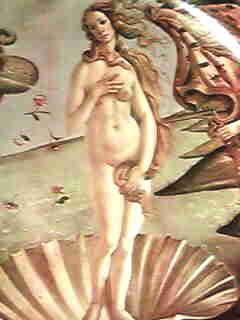
Botticelli Classic
Venus rising from a Shell

Mother of Pearl (abalone) handle and white shell bowl
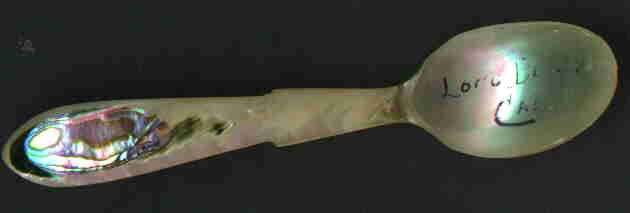
Abalone shell spoon from Long Beach, California

This is a typical "love spoon" with a natural shell bowl. Spoons of this nature were given similar to the way we might give flowers or candy.. Hand cast finial and twisty handle. More spoons of this type may be seen under the "love spoon exhibit"
The Art Nuevo movement was also based upon natural forms and curvilinear lines and as we have seen in other pages, the late Victorians loved to copy the designs of previous art movements. It would only be natural to expect to find sea shells on souvenir spoons and we are not disappointed. Most of these spoons are not particularly rare, but the beautiful shapes make them very interesting to observe. Some of these spoons are also pictured in other categories.

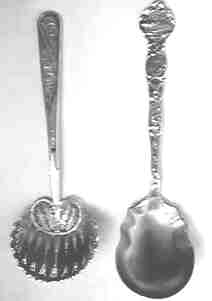
from left to right
1. Anderson House, Lexington, Missouri finial
2. Italian orator finial (part of a set)
3. "love" spoon, hand made engraved "Christine"
4. filligree bon-bon spoon
5. Montana bon-bon spoon
 Back
of # 3 above
Back
of # 3 above
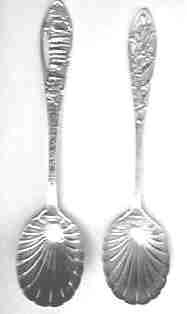
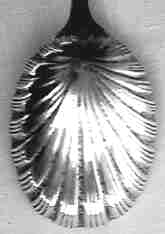
Bryce Canyon & Yellowstone --The bowls are the same, only the handle has changed back of bowl shown in second picture
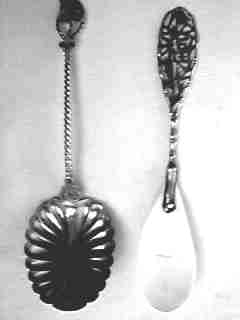
left: bon-bon spoon, enameled finial
right: Chinese cutout handle, Real shell used as bowl
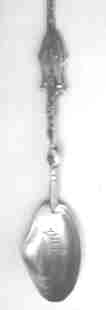

Fishing pole with mussel shaped bowl and close up of back of bowl
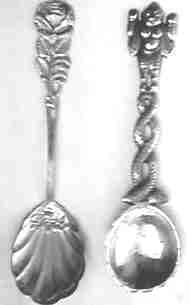
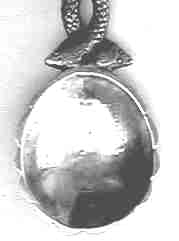
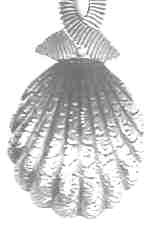
The Buddha spoon is one of my favorites. Not only is it all hand made, but the artisan did a magnificent job on both the front and back. It is also a striking optical illusion. The front of the bowl (second picture) appears round, whereas the back of the bowl (3rd picture) it is obviosly shell shaped.
If you enjoyed this page thank Sandra Archer for her suggestion.
Return to Spoon World Index